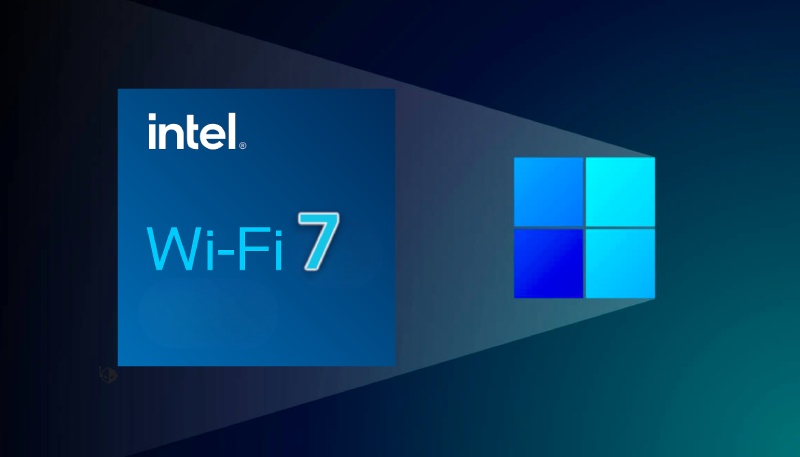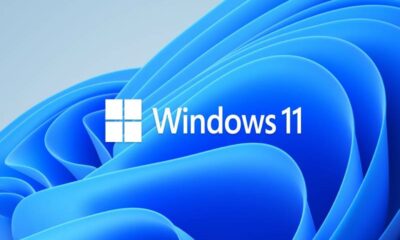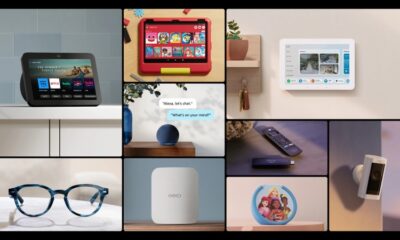Tech
Wi-Fi 7 Requires Windows 11 Only, According to Intel Doc

Since the release of Windows 11 in late 2021, users of Windows 10 don’t appear to be as eager to update as they have in the past. The new OS isn’t necessarily awful; it’s just not much of an upgrade, and some may even call some of the changes a downgrade. However, Microsoft still wants everyone to upgrade, and it should be commended for adding many fantastic features since its release to persuade users to do so. However, it appears like the firm is exerting pressure, as a recent whitepaper from Intel states that the upcoming Wi-Fi standard will only be compatible with Windows 11.
The Intel document was discovered by a Twitter account we’ve seen before (we won’t call it X), which is well-known for leaks and sneaky hardware pre-release practices. The text makes it extremely clear that only Windows 11, ChromeOS, and Linux will support Wi-Fi 7. Microsoft’s refusal to certify a driver for Windows 10 is cited as the justification. Therefore, Microsoft is putting a line in the sand, crossing its arms across its chest, and refusing to support its outdated OS with the most recent Wi-Fi standard.
Although the firm has no technical reason for not supporting Wi-Fi 7, we must keep in mind that Windows 10 will stop receiving security upgrades on October 14, 2025. Because of this, even if Microsoft were gracious enough to permit it in Windows 10, it would only be available for about a year before users would have to upgrade. Everyone advises against running an OS that isn’t receiving security updates unless the computer is air-gapped. Microsoft’s decision is a little bit more understandable given the timing.
The tweet indicates that neither Qualcomm nor MediaTek’s Wi-Fi 7 chips will support Windows 10, so it appears like Redmond will need some assistance in converting users to the new operating system. Although Wi-Fi 7 routers have already been released, few client devices still support it, so it won’t become the new standard for at least another year, if not longer. It could not even be widespread until two years from now when Windows 10 starts to die.
Although it’s obvious that Microsoft wants consumers to move away from the older operating system and is using every available tool to achieve that goal, the company’s choice does make some sense overall. Furthermore, not everyone needs Wi-Fi 7. Most of us are perfectly content to continue using the current standards for a while. Although it doesn’t excuse Microsoft’s actions, Wi-Fi 6 is supported by Windows 10, so it’s not the end of the world.
-

 Business4 weeks ago
Business4 weeks agoHow to fill MSME Form 1? Step-by-Step Guide
-
Business4 weeks ago
From Marine to Chief: The Leadership Journey of Sean Mannix
-

 Gadget4 weeks ago
Gadget4 weeks agoAfter Grand Success on BLDC Ceiling Fan, Eff4 Is Launching Smart Bulb
-

 Festivals & Events4 weeks ago
Festivals & Events4 weeks agoGoogle Celebrates Cherry Blossom Season with Animated Doodle
-

 Business2 weeks ago
Business2 weeks agoPrakash and Kamal Hinduja: Driving Social and Environmental Change
-
Education3 weeks ago
Fred DuVal: University Leadership as a Critical Resource for Climate Change Research and Life-Saving Solutions
-

 Sports4 weeks ago
Sports4 weeks ago2025 NASCAR Craftsman Truck Series Baptist Health 200 at Homestead-Miami Speedway: Race Preview, Prediction, Schedule, Entry List, Drivers to Watch and How to Watch
-

 Health2 weeks ago
Health2 weeks agoThe Hinduja Brothers Commitment to Global Health: Empowering Communities Across Borders

























